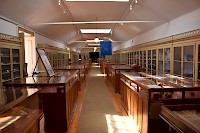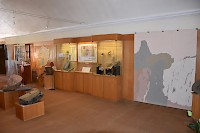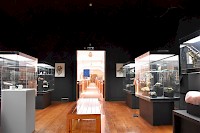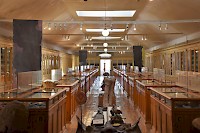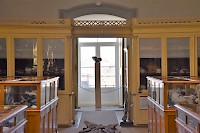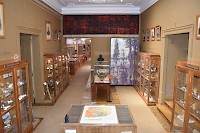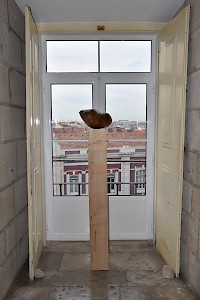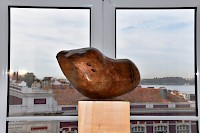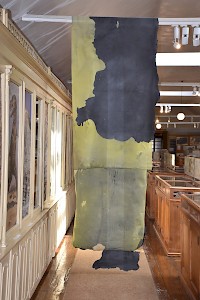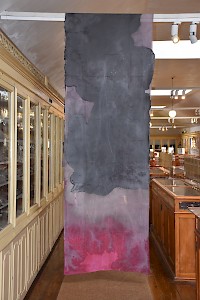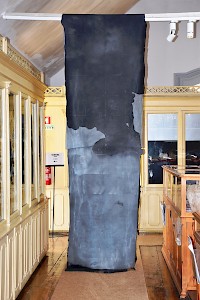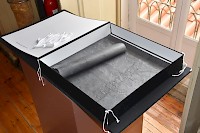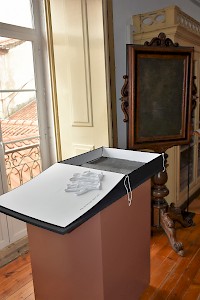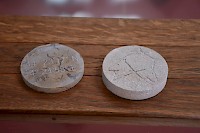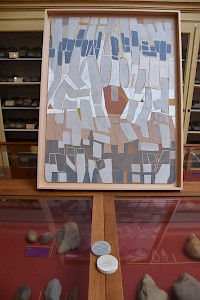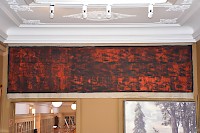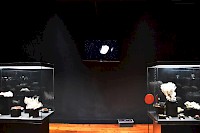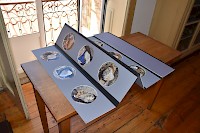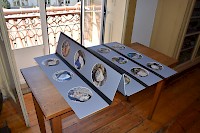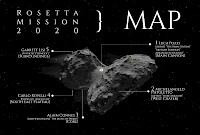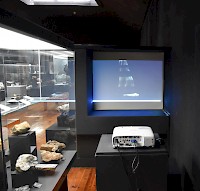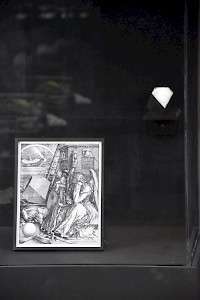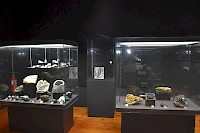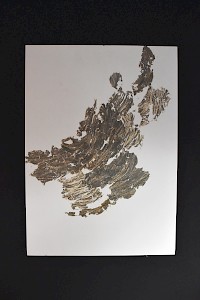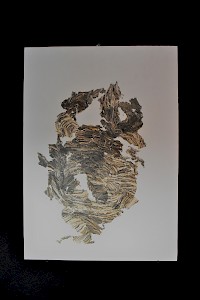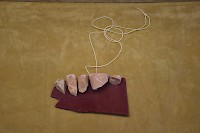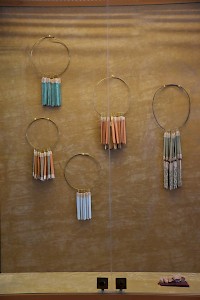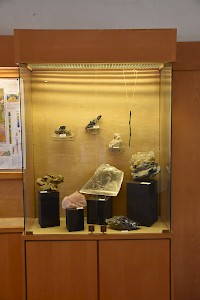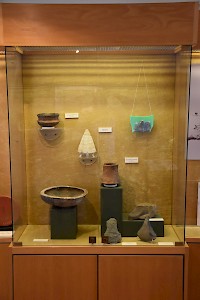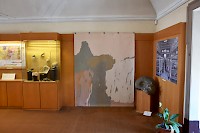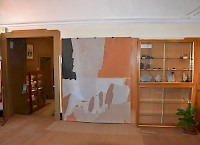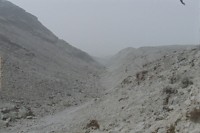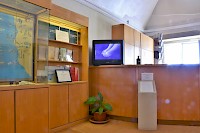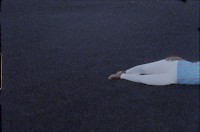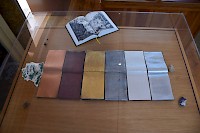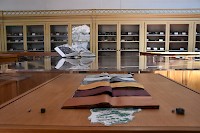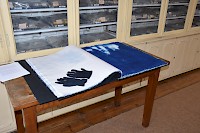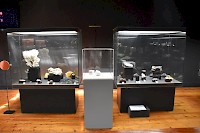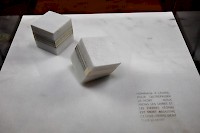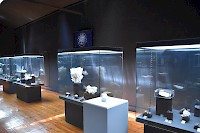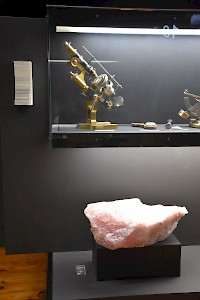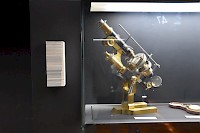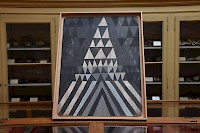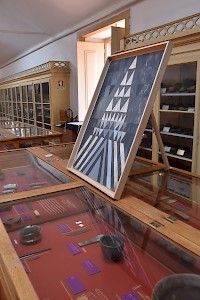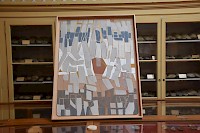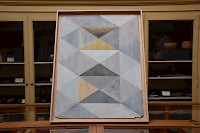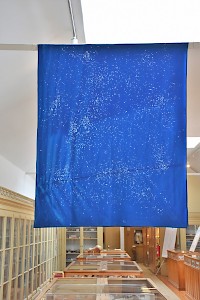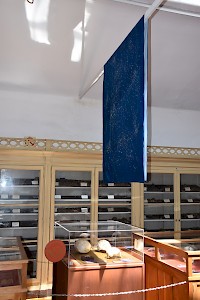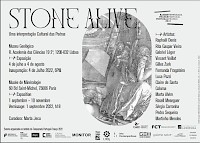Exhibition
STONE ALIVE. A cultural Interpretation of Stone part III
1st - 31st July 2022
ALL IMAGES copyright: Jose Moita, LNEG
ARTISTS:
Claire de Santa Coloma, Fernanda Fragateiro, Gabriel Leger, Gilles Zark, Luca Pozzi, Marta Alvim, Martinho Mendes, Pedro Sequeira, Raphael Denis, Rita Gaspar Vieira Course, Sérgio Carronha, Vincent Voillat, Rosell Meseguer.
Curator: Marta Jecu
ASSOCIATED EVENTS:
8th July, 6pm:
Conference: Giovanbattista Tusa, 'Deep Life. Reimagining our Fossil Modernity'
16th and 17th of July, 3-5pm:
Guided visit of the exhibition with audio- description for the blind and visually impaired (by Eliana Franco and Roberta Gonçalves)
Course AUDIODESCRIPTION FOR MUSEUMS AND EXHIBITION VENUES (9.06 – 17.07. 20220), Trainer: Eliana Franco.
This project constituted by two exhibitions, is the continuation of a larger project that included A CULTURAL INTERPRETATION OF STONE PART I (Galerie Cabinet d'Ulysse, Marseille, 2019) and A CULTURAL INTERPRETATION OF STONE PART II (Galeria da Livraria Sá da Costa, Lisbon, 2020).
Included in the official program of the France-Portugal Season 2022, this project consists in an exhibition in the Geological Museum Lisbon and a second exhibition in the Mineralogy Museum in Paris. The project searches to connect these historical museums in the two capitals. At the origin of the Lisbon Geological Museum are the specimens collected by the Geological Commissions in Portugal starting with 1859. The Musée de Minéralogie MINES Paris was founded in 1783 and still houses the historic display of the time.
Stone is, from a physical point of view, the oldest and most persistent material in the history of humanity, as well as the paradigmatic matter of art. Nevertheless, this project aims to open a field of thought in which stone is not questioned as a material of artistic work, but rather as a carrier of information – a capsule that transports a holistic consciousness and the multiplicity of inter-connected forms of being in time and space. This exhibition is a therefore a collection of thoughts about stone as a entity that transmits a significant heritage of non-human knowledge and ecological consciousness. How can this heritage be visualised, be analysed, imagined and how can it be applied to our immediate present for expanding our awareness with a non-human or over-human scale?
In many of the works included in this exhibition, stone is considered from the point of view of its spiritual value, as an object of meditation that can expand human awareness, moral and justice.
Many of the works aim to promote the affiliation to an expanded ecological dimension, that determines interior transformation by contamination, association and defense of forms of being and knowledge that were excluded from our European civilisation so far. They imagine possibilities of fusion between vegetal, animal, mineral, cosmic and tellurian realities and of holistic ways in which we can understand 'civilisation' (Marta Alvim, Vincent Voillat). Claire de Santa Coloma explores in her sculptures these new forms that results from these contaminations.
Stones bring also a testimony of a pre-human era. They carry the memories of a cosmic time when the earth was in the process of its formation. In that sense stone reveals the cosmic heritage of our civilisation and micro-cosmos / macro-cosmos correspondences. The inner layers of the earth with their configuration of precious stones and crystals, as well as the design of every single gem, reproduce constellations and astral landscapes they were once part of – and they represent as sort of DNA of what humans too are made of. The reinvention of these forms, that results from processes of introspections are present in the paintings with minerals of Sérgio Carronha, who lives in small town in Alentejo with traces of prehistoric civilisations.
As a collector of minerals Pedro Sequeira is interested in the rarity of stones in relation to the territory. He is a collector of minerals in the mountains of Portugal, gem cutter and scientific scholar of precious stones. Martinho Mendes makes a research on ancestral agricultural techniques in Madeira and the hybrid human-mineral communion they generated. Fernanda Fragteiro also connects to the cultural history, creating stone-books. The works, both incorporating books by Arthur Larrue, tell the story of the group of Russian dissidents and activists – Voina.
The information stones carries reached us into the present due to accidents: cosmic, geological accidents and accidental persistence of elemnts of matter from past eras far beyond the human – occurrences which are outside of the influence of the human. Some of the artists included in the exhibition search to connect the personal heritage with the ones stones carries, by connecting the personal space and rituals with the references stones embodies. Rita Gaspar Vieira takes the imprints of her atelier in the fabrication of a cotton and graphite paper. Gabriel Leger is using the cyanotype photographic technique on canvas by using antique stones from a path on which Galileo Galilei was walking at the time of his famous trial in Rome in 1633.
Stone is at the same time connected to territorial and resource exploitation and the history of the museums themselves was connected to research for mineral exploitation. The theme of mineral colonisation is present in the exhibition in a geopolitical reading with the work of Rosell Meseguer, who talks about the so-called "war of the rare earths". Lanthanides, have been extracted from the end of the 19th century. In the 1960's, they started being used for high technology. China, United States, India and Brazil, are major producers of rare earths, while China is now a key country in their production, which is associated worldwide with exploitation and destruction of indigenous populations territories, ecosystems and cultures. The artist paints by hand countless book pages with these mineral powders as in an effort of reparation and commemoration of the dark legacy of these exploitations.
We might be inclined to consider stone as a compact, congruous being. But in fact stone is far from static, it is an amalgam made of moving fragments. Some artists included in this exhibition deal with stone as a hybrid entity, between real and virtual. This 'digital' stone becomes a tool of studying the future possibilities of extension of the matter, with a more permeable, versatile and inclusive configuration, that connects human and non-human being into one continuum and produces a new type of heritage. Luca Pozzi creates a cross-reality artworkthat exists simultaneously in various platforms and been created with the participation of Carlo Rovelli (physician), Alain Connes (mathematician), Michelangelo Pistoletto (artist) and Garrett Lisi (physician). Gilles Zark works with stones donated by the museum, which are 'printed' on canvas, resulting in abstract information 'writing', reminding digital coding.
The work of Raphael Denis featuring the philosophical poliedre of Albrecht Dürer's Melancholia, is paradigmatic for this exhibition, as it shows stone at the centre of interdisciplinary researchers who's ultimate goal is to perfect 'the self', by connecting to a a metaphysical dimension of knowledge and intuition.
Marta Jecu
